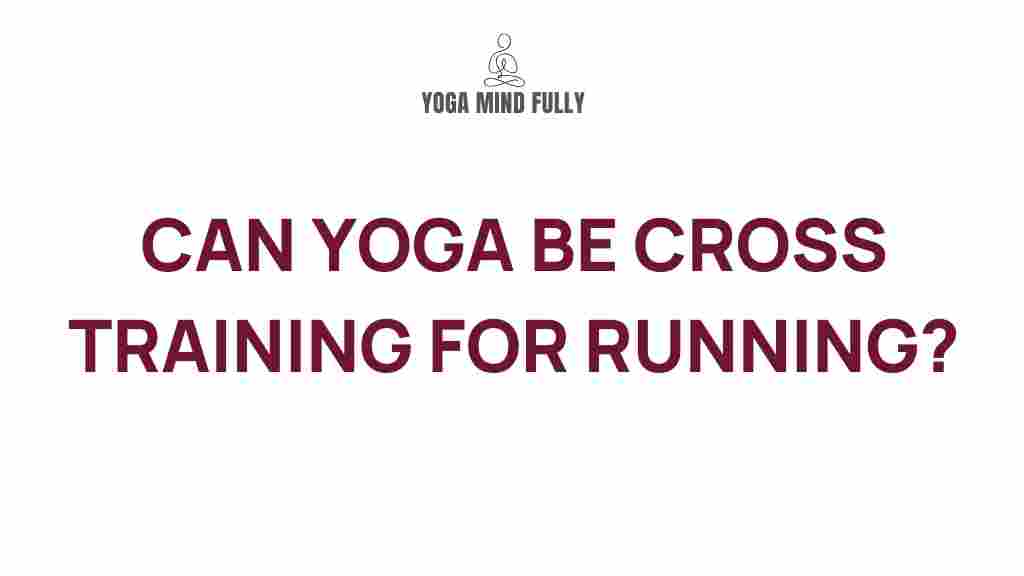Why Yoga is a Game-Changer for Runners
Runners often face challenges like tight muscles, joint stress, and repetitive strain injuries. While running offers exceptional cardiovascular benefits, it can leave the body imbalanced. This is where yoga steps in as an invaluable cross-training tool. By integrating yoga into your routine, you can enhance flexibility, build strength, and achieve the mental clarity needed for peak running performance.
Benefits of Yoga for Runners
Yoga complements running by addressing areas often neglected by traditional training. Here are some of the key benefits:
- Improved flexibility: Tight hamstrings and calves? Yoga helps loosen these areas, increasing your range of motion and stride efficiency.
- Enhanced strength: Poses like Warrior II and Plank strengthen stabilizing muscles, reducing the risk of injury.
- Better balance and posture: Balance-focused poses such as Tree Pose help prevent overuse injuries caused by poor running form.
- Mental focus: Yoga’s emphasis on mindfulness enhances your ability to stay focused during long runs or races.
- Faster recovery: Restorative yoga helps relax tense muscles, improving circulation and speeding up recovery.
How to Get Started with Yoga for Cross Training
Adding yoga to your running schedule doesn’t have to be overwhelming. Follow these steps to seamlessly incorporate it into your routine:
1. Choose the Right Yoga Style
Not all yoga practices are created equal. Here are a few styles runners should consider:
- Vinyasa Yoga: A dynamic style that improves strength and flexibility through flowing sequences.
- Hatha Yoga: Slower-paced with a focus on basic poses, ideal for beginners.
- Restorative Yoga: Gentle poses held for extended periods, perfect for recovery days.
- Yin Yoga: Focused on deep stretching and connective tissue release.
Experiment with different styles to find the one that aligns with your goals and schedule.
2. Start with a Simple Routine
If you’re new to yoga, start with a 15- to 20-minute practice a couple of times per week. A simple routine might include:
- Cat-Cow Pose: Warm up your spine and loosen your lower back.
- Downward Dog: Stretch your calves, hamstrings, and shoulders.
- Warrior I: Build lower-body strength and stability.
- Pigeon Pose: Release tension in the hips.
- Child’s Pose: Finish with a restorative posture to calm your mind.
3. Align Yoga Sessions with Your Running Schedule
To maximize the benefits, integrate yoga into your training plan strategically:
- Before a run: Opt for a short, energizing flow to warm up your muscles.
- After a run: Use gentle stretches to cool down and aid recovery.
- On rest days: Dedicate more time to longer yoga sessions focused on flexibility and balance.
4. Prioritize Consistency
Consistency is key to reaping the benefits of yoga. Even a 10-minute daily practice can make a significant difference over time.
Common Challenges and How to Overcome Them
Adopting yoga as a cross-training tool can come with challenges. Here’s how to address them:
1. Lack of Time
Busy runners often struggle to fit yoga into their schedules. To overcome this, try combining yoga with your warm-up or cooldown routines. Alternatively, wake up 10 minutes earlier for a quick morning stretch.
2. Feeling Intimidated
Yoga can seem daunting to beginners. Start with beginner-friendly online classes or attend a local studio that welcomes all levels. Remember, yoga is a personal practice—there’s no need to be perfect.
3. Physical Limitations
If tight muscles or injuries make certain poses uncomfortable, modify them. For instance, use props like yoga blocks or a strap to support your practice.
Pro Tips for Integrating Yoga into Your Routine
Here are some additional tips to help you succeed:
- Set goals: Whether it’s improving flexibility or reducing injury risk, set clear goals for your yoga practice.
- Track progress: Keep a journal to note improvements in mobility, strength, and running performance.
- Mix it up: Alternate between different yoga styles to keep things interesting and target different areas.
- Stay patient: Progress takes time, so celebrate small victories along the way.
Additional Resources
To deepen your understanding of how yoga can benefit runners, check out these resources:
- Yoga Journal for expert tips and sequences.
- Our blog post on stretching techniques for runners for complementary exercises.
Conclusion
Yoga is a transformative tool for runners, offering benefits that go beyond physical performance. By enhancing flexibility, strength, and mental focus, yoga helps you achieve a more balanced and injury-resistant body. Whether you’re a seasoned runner or just starting, integrating yoga into your routine can unlock new levels of performance and well-being. Start small, stay consistent, and enjoy the journey toward a stronger, healthier you.
This article is in the category Strength & Flexibility and created by YogaMindFully Team
